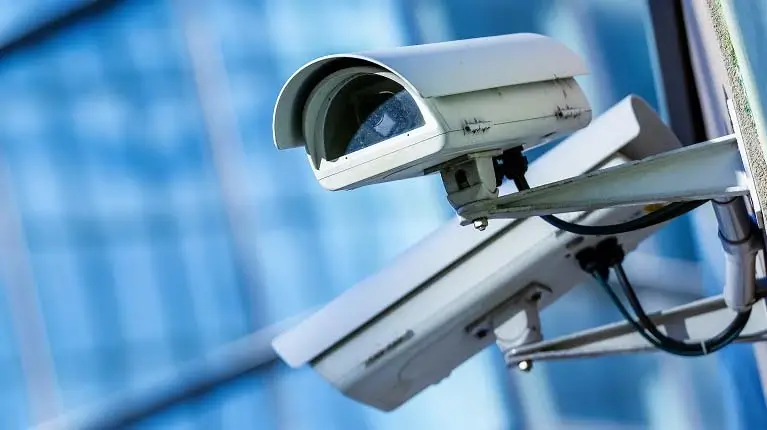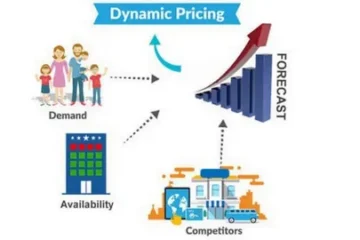Security surveillance is a crucial aspect of modern business management. A well-chosen camera system not only deters potential theft, but it also provides valuable insights into daily operations and can aid in dispute resolution. With an array of options available, selecting the right security camera system for your needs can be a complex task. In this article, we outline the key factors to consider so you can make an informed decision. Keep reading to uncover the essentials of business surveillance systems.
Understanding the Different Types of Security Camera Systems
When choosing a security camera system, it’s crucial to understand the different types available. Dome security cameras, often used indoors, are discreet and vandal-resistant. Bullet cameras, ideal for outdoor use, offer a longer range and weather resistance. PTZ cameras provide remote control for monitoring large areas, making them versatile for various surveillance needs.
IP cameras are popular for their high-resolution footage and real-time remote monitoring capabilities, integrating seamlessly into existing networks. While traditional analog cameras might be more budget-friendly, they lack advanced features. Wireless systems are easy to install and flexible but require consideration of signal strength and data security. Selecting the right camera type depends on your specific surveillance objectives and environment.
Assessing Your Business Surveillance Needs
Before investing in a security camera system, conduct a needs assessment to identify critical areas for surveillance. Consider the lighting conditions of your locations, as camera performance can vary significantly. Infrared or low-light cameras may be necessary for poorly lit areas, while wide dynamic range cameras are more suitable for high light exposure zones.
Analyze the dynamics of your space, as a bustling retail environment might require more cameras or real-time alert systems, while a small office space may need fewer cameras with wider angles. Project future growth, as a scalable security system that can integrate additional cameras as needed can offer a better long-term investment, ensuring your surveillance system remains robust and adaptable as your business evolves.
Evaluating Camera Resolution and Field of View for Quality Monitoring
Camera resolution is crucial for capturing clear footage, with high-definition cameras providing detailed information for positive identification. Although expensive, these cameras offer enhanced security and clarity. Field of view is another important factor, with wide-angle lenses covering more area but sacrificing finer detail. A narrower field of view offers more detailed images but reduces coverage area. The right balance depends on the specific monitoring needs of each zone.
Assessing the operational environment, such as weather exposure, vandalism resistance, and discrete surveillance, is essential for choosing the right camera. Technology advancements like facial recognition and motion detection can enhance the value of high-resolution systems by providing smart security solutions, facilitating proactive threat detection and simplifying the review process.
The Importance of Storage and Retention in Security Systems
Security camera systems require adequate storage capacity. On-premise DVR or NVR options offer robust, scalable solutions for businesses handling sensitive information or strict surveillance regulations. Cloud storage offers off-premise solutions with encryption and redundant storage for enhanced data safety. These solutions are more scalable and flexible, allowing businesses to adjust their data storage without physical hardware expansion.
Consider the retention period required for footage, as some businesses may need to retain footage for extended periods due to regulatory mandates or corporate policies. Ensure the chosen system can support these retention periods without causing storage shortages or excessive costs. Regularly verify the functionality of data backups to prevent security or regulatory compliance gaps in the video archive.
Navigating Legal Considerations and Compliance for Business Surveillance
Security camera systems require adequate storage capacity. On-premise DVR or NVR options offer robust, scalable solutions for businesses handling sensitive information or strict surveillance regulations. Cloud storage offers off-premise solutions with encryption and redundant storage for enhanced data safety. These solutions are more scalable and flexible, allowing businesses to adjust their data storage without physical hardware expansion.
Consider the retention period required for footage, as some businesses may need to retain footage for extended periods due to regulatory mandates or corporate policies. Ensure the chosen system can support these retention periods without causing storage shortages or excessive costs. Regularly verify the functionality of data backups to prevent security or regulatory compliance gaps in the video archive.
Altogether, the deployment of a security camera system requires a strategic approach that aligns with operational needs, technological capabilities, and legal compliance. By carefully considering these aspects, businesses can provide a secure environment for their operations and assets. An informed decision on surveillance will not only ensure safety but also bring about peace of mind for business owners and patrons alike.



